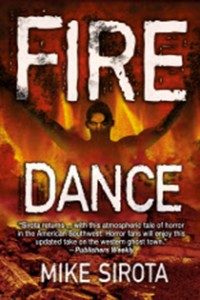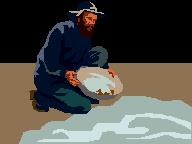During my 200+ years as a writing coach, I’ve seen it all when it comes to manuscripts by wanna-be authors. Issues with plotting, characterization, dialogue, pacing, and all other elements of a novel come to mind—oftentimes in glaringly high definition and even IMAX.
Which leads me to one of the most über-glaringly problematic elements: Point Of View.
 No long lecture here; rather, utilizing my newly re-released ghost story, Fire Dance, I’ll SHOW you how I separated the multiple POVs in the story and gave each of them—including the mentally deranged ghost—their own unique “voice.”
No long lecture here; rather, utilizing my newly re-released ghost story, Fire Dance, I’ll SHOW you how I separated the multiple POVs in the story and gave each of them—including the mentally deranged ghost—their own unique “voice.”
A POV is the angle of vision from which a story is told. Along with a blend of narration, you’re telling the story through a character’s eyes. You’ll be staying with that character for a while, be it half a page or a full chapter, and not bouncing from one to another (I call that POV ping pong), as I’ve seen so often. An example, just in two consecutive lines:
I wonder if she likes me, Bill thought.
He’s a real jerk, Mary mused.
This is the intrusive author bouncing from one head into another. And yes, I know there are authors—some successful ones—who get away with it, but for novice writers, and even experienced ones, it is not recommended.
When you’re ready to switch POVs you can do so with a space break—a double space with or without a dingbat—a chapter break, or by using sub-chapter numbers within a chapter. The latter is a personal favorite of mine, one that I utilized in Fire Dance. Regardless of the device a writer chooses, the change will be ineffective without each character having a “voice” that easily distinguishes it from the other characters.
 In chapter one of Fire Dance, which takes place in 1878, sub-chapter 2 introduces Dr. Everett Cooke, founder and director of Concordia Sanitarium. He is an intelligent, educated man—but then, you should be able to tell that from the opening two paragraphs:
In chapter one of Fire Dance, which takes place in 1878, sub-chapter 2 introduces Dr. Everett Cooke, founder and director of Concordia Sanitarium. He is an intelligent, educated man—but then, you should be able to tell that from the opening two paragraphs:
Forty minutes later Dr. Everett Cooke arrived at Concordia Sanitarium. This bleakest of outposts, according to so many, was home for him, and he always felt glad to return.
The days in and around San Francisco had been the closest thing to a vacation in years. Business and pleasure both, of course. “Absence of occupation is not rest, a mind quite vacant is a mind distressed,” William Cowper had said about a century ago. Some time at Livermore, where he was always welcome. But there had been the opera, theater, the shops and fine restaurants…the women.
In sub-chapter 8 I briefly POV Bruno Leopold, our deranged mass murderer and soon-to-be ghost. He’s not only unbalanced, he’s also drugged. A challenge, no? Here is how it came out:
The skinny man—Jacob—kept his distance, but Bruno didn’t care. As the chlorpromazine calmed him more, making his eyelids heavy, he thought about the day.
He thought about Good Dr. Cooke.
Bruno wasn’t going back. The good doctor was keeping him here. One day he would go upstairs, and he would have friends. Not going back, not back, because they would kill him for what he had done, and Bruno didn’t want to die.
Didn’t want to die.
Good Dr. Cooke, good doctor…
Not go back, not back.
…didn’t want to die.
Sound deranged enough for you? Bruno, like everyone else at Concordia, is burned to death shortly thereafter, but his “rebirth” scene over a century later occurs quickly enough in chapter two, sub-chapter 2:
 Stirrings. The first tentative cognizance of being.
Stirrings. The first tentative cognizance of being.
No, not the first time, because he had lived before. He had been. The reality of that came to him even in those initial seconds.
He had been.
But nothing else came as quickly. There were images, yes, but vague, desultory; different colors, sometimes distinct in variegated streaks, then coiling together in an unfathomable serpent’s ritual. Frightening him, these colors, though not nearly as much as the blackness that would remain when they suddenly flickered out, because the blackness was so empty, so cold…
So seemingly infinite.
And yet not irresistible, because he did not feel its hold upon him, and he could move away from it, move away. He knew that now, and the fear diminished, but did not cease.
Move away. Not up, or down, or to the side, because movement was all the same, and any movement took him away from the blackness, and that was good.
An interminable, sluggish passage through the womb, which was not a liquid womb, but rather…
Sand.
A womb of sand, this birthplace of his new being.
Move away from the blackness, move through the womb of sand before it became a granular sepulcher, because he had been, and now he was again, and he didn’t want to die.
Didn’t want to die.
Bruno’s name is not mentioned in this scene, but from his thoughts alone—his “voice”—he is easily identifiable. Seems weird giving a POV to a ghost—but hey, ghosts are people too…I think.
Sub-chapter five introduces a key character, a grizzled prospector named Dexter Jones. See if this intro sounds like the right “voice”:
A few years after the end of World War II, Dexter Jones found a gold nugget of some size in Bighorn Creek.
 To this day he can still take you to the exact spot where he first saw the blasted thing. It was where the creek cut through Madhouse Canyon, about three hundred yards in from the canyon’s mouth, located another hundred or so from those old adobe ruins. Not much flow in mid-autumn, and the nugget had been protruding from the east bank just above the water line. Raised a few eyebrows with that rock, Dexter Jones did.
To this day he can still take you to the exact spot where he first saw the blasted thing. It was where the creek cut through Madhouse Canyon, about three hundred yards in from the canyon’s mouth, located another hundred or so from those old adobe ruins. Not much flow in mid-autumn, and the nugget had been protruding from the east bank just above the water line. Raised a few eyebrows with that rock, Dexter Jones did.
Yup, ya got the picture? Once you’ve introduced a character, his or her “voice,” whether in POV or dialogue, should be easily recognizable to the reader, even if you don’t immediately use the character’s name.
A brief, but hopefully useful post. Any questions, let me know. Happy POVing!
